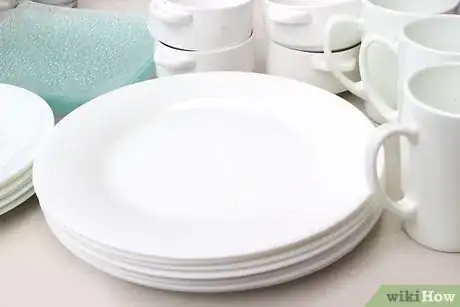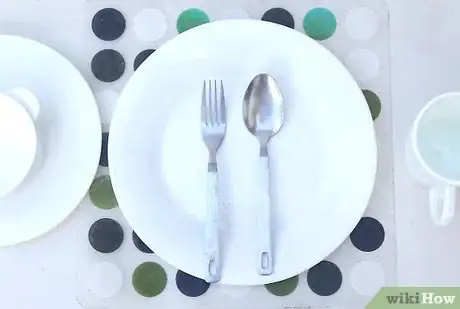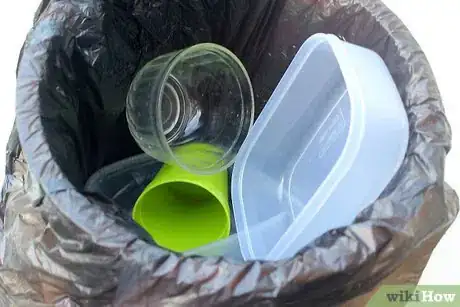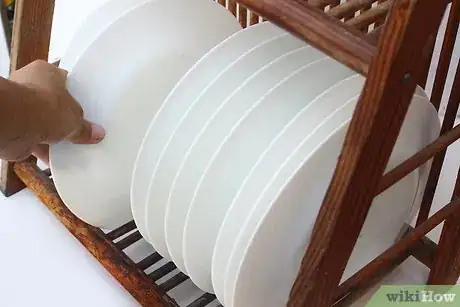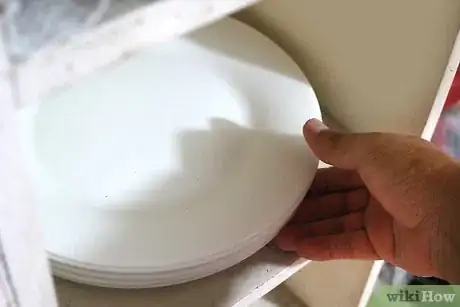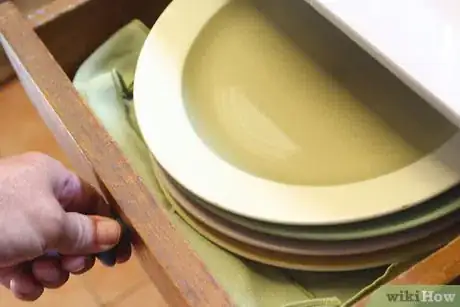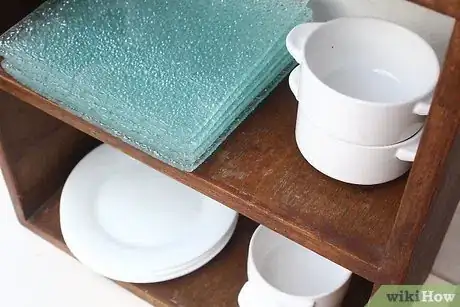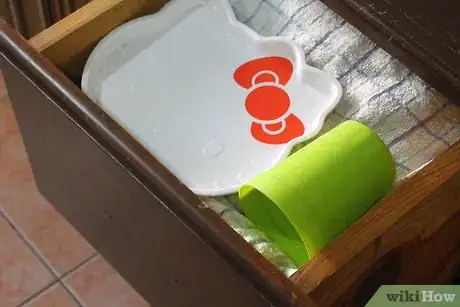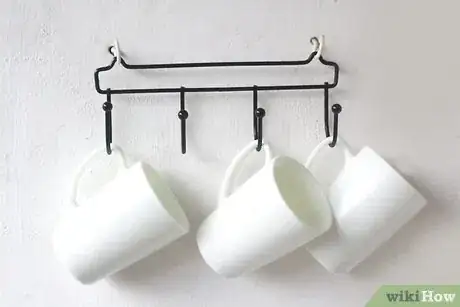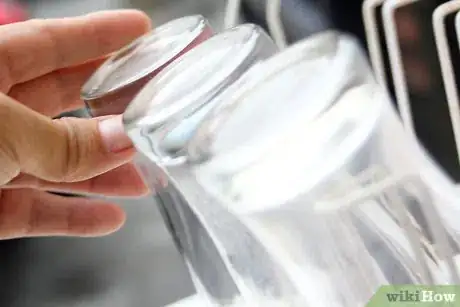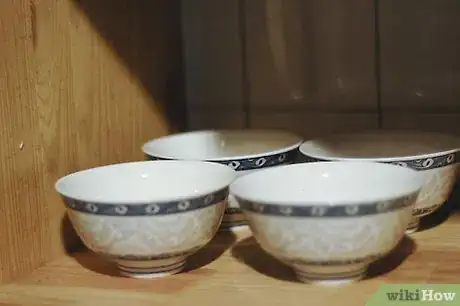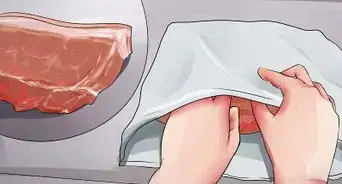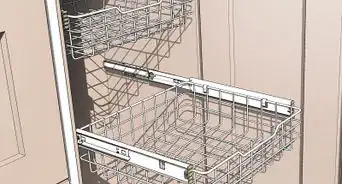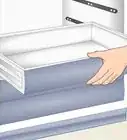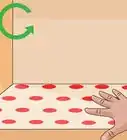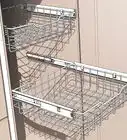This article was co-authored by Robert Rybarski. Robert Rybarski is an Organizational Specialist and Co-Owner of Conquering Clutter, a business that customizes closets, garages, and plantation shutters to ensure organized homes and lifestyles. Robert has over 23 years of consulting and sales experience in the organization industry. His business is based in Southern California.
There are 10 references cited in this article, which can be found at the bottom of the page.
This article has been viewed 156,886 times.
Having an organized kitchen is important to running it efficiently. Whether you're cooking a meal or just getting breakfast before work, things work more smoothly if you have your dishes well organized in your kitchen cabinets. Clear out unnecessary clutter and organize your dishes according to how you use them. If you’re using open cabinets or hanging dishware on the walls, consider grouping them by color, size, and design for an attractive display.
Steps
Clearing the Clutter
-
1Do an inventory check. Separate your dishes into piles. Put your daily use dishes together. Group special occasion dishes separately. Pots and pans should go in another group. Separate your cups too.
-
2Decide how many dishes you really need. Keep enough dishes in your kitchen to feed your family or a small gathering. You should have enough cups, plates (large and small), bowls, mugs, and silverware for two days of meals for your family. Carefully pack up the rest of your dishes and store them in your garage or another area of your home. Make a plan to get rid of the rest.Advertisement
-
3Discard items that you don’t use. Throw away broken items. Pack up excess pieces -- like too many coffee mugs or plastic cups, containers without lids or lids that no longer match containers, and things you will never use. This includes things that don’t work well or you just don’t like. Donate all of the things you’ve packed up.[1]
Organizing Your Everyday Dishes
-
1Keep your everyday dishes accessible. Put your everyday dishes near the dishwasher if you can. This will make it easier to put them away. You can also hang a decorative and strong dish drainer over the sink and store your dishes there.[2]
- Try putting a plate rack over the sink. Don’t worry about it blocking light from a window -- the light will filter through the open rack.[3]
-
2Put everyday dishes on lower shelves. Keep your daily dishes within easy reach on lower shelves in your cabinets. Insert sliding shelf organizers or cabinet risers to make accessing them even easier. Or organize your plates in an upright rack so you can quickly grab them from the cabinet.[4]
-
3Keep your everyday dishes close at hand in pullout drawers. Organize deep drawers with pegs or dish racks to separate the dishes and keep the drawers orderly. Choose or install the drawers near the dishwasher. Store your everyday cutlery and cups in nearby drawers or cabinets.[5]EXPERT TIPRobert Rybarski is an Organizational Specialist and Co-Owner of Conquering Clutter, a business that customizes closets, garages, and plantation shutters to ensure organized homes and lifestyles. Robert has over 23 years of consulting and sales experience in the organization industry. His business is based in Southern California.Organizational Specialist

 Robert Rybarski
Robert Rybarski
Organizational SpecialistOur Expert Agrees: Put your plates in drawers so that you can stack as many as you need without having to put them in a high cabinet. You can also put your everyday dishes on lower pantry shelves for quick access.
-
4Use open shelving. Store your everyday items in open shelving to make things easier to grab. Try installing heavy-duty kitchen racks if you don’t have open shelves. You could also build a ready-to-assemble shelving unit. Store heavier items on lower racks or shelves of the unit you’ve built.[6]
- Opt for a tall, thin unit that won’t take up extra space in your kitchen.
-
5Make a space for kid’s dishes. Store children’s cups, plates, bowls, and cutlery in a very low cabinet, drawer, banquette, or window seat that opens for storage. This way your children can easily access their dishes. Add napkins, placemats, and other items your children use frequently when eating.
-
6Put pots and pans near the stove. Put heavy items, like mixing bowls and dutch ovens, in low cabinets. Don’t forget to use the drawer under your oven for metal or glass bakeware. Add toe kick drawers for additional storage.[7]
- Keep other cooking implements, like spatulas and wooden spoons in caddies near the stove.
Storing Your Drinkware
-
1Use your wall space for mugs. Put up wire racks for hanging your tea cups and mugs. You could also install a rail (or more than one rail) and hang your mugs from S hooks. Try hanging a piece of wood on the wall and hammering in long nails as hooks for your mugs.[8]
-
2Arrange your mugs in or under cabinets. Keep your coffee mugs in a basket under your shelves if you don’t have much room in the cabinets. Save space in the cabinets by putting in a freestanding shelf and stacking mugs on top and dishes beneath. You can also install hooks under your cabinets or under shelves for hanging mugs.
-
3Treat your glasses with care. Don’t set fine glasses on their rims. Keep them upright or hang them from the stem using a sliding glass hanger. Also, store everyday glasses with the rims up. Put these near your everyday dishes.[9]
- Put the sliding hanger on a higher shelf or out of the way to prevent glasses from getting knocked off.
Arranging Your China
-
1Put your china in a high or low cabinet. Keep it out of the way of the things you use on a daily basis. Also store other infrequently used items, like gravy boats, out of the way. Wrap dishes to prevent dust and grease build-up if they're left exposed, like on the top of a cupboard.[10]
-
2Keep your good china in a special place. Store it in a hutch with glass doors that will show it off. Put extra pieces that won’t fit in the display in the drawers or shelves of the hutch. You can also use an armoire or glass front storage cabinet for storing china.[11]
-
3Pack your china for storage. Put your china in dish storage cases to prevent chips and cracks. Wrap handles on tea cups and serving and sugar bowl dish lids with cotton or newspaper to further protect them. Add pieces of felt between dishes to keep them from banging together. Don’t forget to label the cases so you can easily find pieces you need when entertaining.[12]
Community Q&A
Did you know you can get answers researched by wikiHow Staff?
Unlock staff-researched answers by supporting wikiHow
-
QuestionI place my cups in the kitchen cabinet upside down with the handles facing the outside. Is this right?
 wikiHow Staff EditorThis answer was written by one of our trained team of researchers who validated it for accuracy and comprehensiveness.
wikiHow Staff EditorThis answer was written by one of our trained team of researchers who validated it for accuracy and comprehensiveness.
Staff Answer wikiHow Staff EditorStaff AnswerPlacing the cups and glasses upside down comes from the desire to keep dust out. It isn't essential if the cabinet is airtight and technically, both cups and glasses should be kept rim-side up because the drinking edges are the most delicate part of them. If it's working for you though, it's fine to keep them this way. However, do keep the shelf itself clean, otherwise there's no benefit to keeping the cups upside down, as the drinking end will rub against a dirty shelf––yuk!
wikiHow Staff EditorStaff AnswerPlacing the cups and glasses upside down comes from the desire to keep dust out. It isn't essential if the cabinet is airtight and technically, both cups and glasses should be kept rim-side up because the drinking edges are the most delicate part of them. If it's working for you though, it's fine to keep them this way. However, do keep the shelf itself clean, otherwise there's no benefit to keeping the cups upside down, as the drinking end will rub against a dirty shelf––yuk! -
QuestionShould I place a material between dishes when arranging them in cabinets?
 wikiHow Staff EditorThis answer was written by one of our trained team of researchers who validated it for accuracy and comprehensiveness.
wikiHow Staff EditorThis answer was written by one of our trained team of researchers who validated it for accuracy and comprehensiveness.
Staff Answer wikiHow Staff EditorStaff AnswerSome people find that using a fabric or foam "separator" between plates is a useful option to prevent chipping and rubbing of plates. It may be more helpful when the plates are especially delicate or important to you rather than everyday plates, as it can be a bit tedious to put them in between plates every day (and impossible to train everyone in the household to comply!). If you can't afford the expense of separators, plain paper plates of a similar size to the stored plates can work just as well to keep the plates separated but be sure the plates are dry before using them.
wikiHow Staff EditorStaff AnswerSome people find that using a fabric or foam "separator" between plates is a useful option to prevent chipping and rubbing of plates. It may be more helpful when the plates are especially delicate or important to you rather than everyday plates, as it can be a bit tedious to put them in between plates every day (and impossible to train everyone in the household to comply!). If you can't afford the expense of separators, plain paper plates of a similar size to the stored plates can work just as well to keep the plates separated but be sure the plates are dry before using them. -
QuestionHow should I organise my pantry?
 wikiHow Staff EditorThis answer was written by one of our trained team of researchers who validated it for accuracy and comprehensiveness.
wikiHow Staff EditorThis answer was written by one of our trained team of researchers who validated it for accuracy and comprehensiveness.
Staff Answer wikiHow Staff EditorStaff AnswerPantry organization is a cross between art, science and personal preference! Most important is to assess the available space and then work to that rather than trying to emulate some brilliant pantry off Pinterest that is twice the size of your own. Think about the most-used to the least-used food staples when choosing where to place items and consider BPA-free plastic boxes, jars and other containers for insect-proof storage. Help with organizing your pantry can be found here: How to Organize a Pantry.
wikiHow Staff EditorStaff AnswerPantry organization is a cross between art, science and personal preference! Most important is to assess the available space and then work to that rather than trying to emulate some brilliant pantry off Pinterest that is twice the size of your own. Think about the most-used to the least-used food staples when choosing where to place items and consider BPA-free plastic boxes, jars and other containers for insect-proof storage. Help with organizing your pantry can be found here: How to Organize a Pantry.
References
- ↑ http://www.home-storage-solutions-101.com/kitchen-cabinet-organization.html
- ↑ https://www.houzz.com/ideabooks/390964/list/house-planning-how-to-set-up-your-kitchen
- ↑ http://www.homedit.com/6-ways-in-which-you-can-organize-your-dish-plates/
- ↑ https://www.realsimple.com/home-organizing/organizing/organizing-kitchen/smart-ideas-kitchen
- ↑ http://www.bhg.com/kitchen/storage/organization/creative-ways-to-store-dishes/
- ↑ http://www.bhg.com/kitchen/storage/organization/creative-ways-to-store-dishes/
- ↑ http://www.apartmenttherapy.com/9-steps-to-arranging-a-well-organized-kitchen-174613
- ↑ http://www.goodhousekeeping.com/home/organizing/g3497/how-to-organize-coffee-cups/
- ↑ http://www.goodhousekeeping.com/home/organizing/tips/a26857/glass-storage-up-or-down/
About This Article
Having an organized kitchen can really help you cook and clean more efficiently. Before you arrange your dishes in your kitchen cabinets, separate your dishes into categories and discard any items that you never use. You should put everyday dishes, like plates and bowls, on a lower shelf so they’re more accessible. Then, put pots and pans together in a spot near the stove. Place cooking tools, like spatulas and wooden spoons, in a caddy next to or above the stove. You’ll probably want to put mugs and cups together in a cabinet close to the sink. If you have any decorative dishes, like china, consider putting these in a separate place, like in a cabinet in your dining room. To learn how to pack your china properly, read on!
